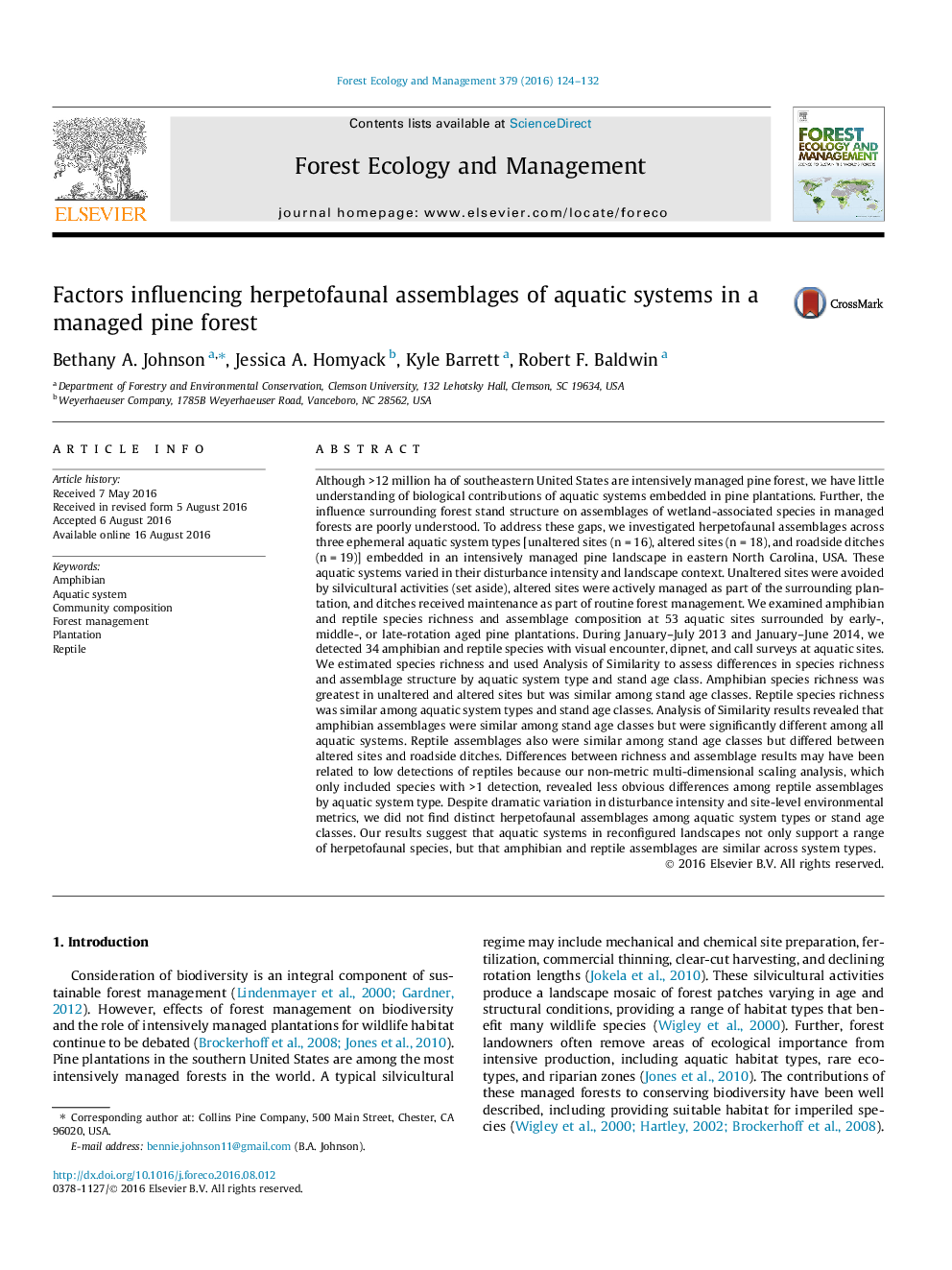| کد مقاله | کد نشریه | سال انتشار | مقاله انگلیسی | نسخه تمام متن |
|---|---|---|---|---|
| 6459627 | 1421379 | 2016 | 9 صفحه PDF | دانلود رایگان |
- We examined amphibian and reptile assemblages in aquatic systems embedded in a managed forest.
- Amphibian species richness was greatest in altered and unaltered systems, but similar across stand ages.
- Reptile species richness was similar among aquatic systems and stand age classes.
- We detected 34 herpetofaunal species, suggesting managed forests can support a wide range of amphibians and reptiles.
Although >12 million ha of southeastern United States are intensively managed pine forest, we have little understanding of biological contributions of aquatic systems embedded in pine plantations. Further, the influence surrounding forest stand structure on assemblages of wetland-associated species in managed forests are poorly understood. To address these gaps, we investigated herpetofaunal assemblages across three ephemeral aquatic system types [unaltered sites (n = 16), altered sites (n = 18), and roadside ditches (n = 19)] embedded in an intensively managed pine landscape in eastern North Carolina, USA. These aquatic systems varied in their disturbance intensity and landscape context. Unaltered sites were avoided by silvicultural activities (set aside), altered sites were actively managed as part of the surrounding plantation, and ditches received maintenance as part of routine forest management. We examined amphibian and reptile species richness and assemblage composition at 53 aquatic sites surrounded by early-, middle-, or late-rotation aged pine plantations. During January-July 2013 and January-June 2014, we detected 34 amphibian and reptile species with visual encounter, dipnet, and call surveys at aquatic sites. We estimated species richness and used Analysis of Similarity to assess differences in species richness and assemblage structure by aquatic system type and stand age class. Amphibian species richness was greatest in unaltered and altered sites but was similar among stand age classes. Reptile species richness was similar among aquatic system types and stand age classes. Analysis of Similarity results revealed that amphibian assemblages were similar among stand age classes but were significantly different among all aquatic systems. Reptile assemblages also were similar among stand age classes but differed between altered sites and roadside ditches. Differences between richness and assemblage results may have been related to low detections of reptiles because our non-metric multi-dimensional scaling analysis, which only included species with >1 detection, revealed less obvious differences among reptile assemblages by aquatic system type. Despite dramatic variation in disturbance intensity and site-level environmental metrics, we did not find distinct herpetofaunal assemblages among aquatic system types or stand age classes. Our results suggest that aquatic systems in reconfigured landscapes not only support a range of herpetofaunal species, but that amphibian and reptile assemblages are similar across system types.
Journal: Forest Ecology and Management - Volume 379, 1 November 2016, Pages 124-132
